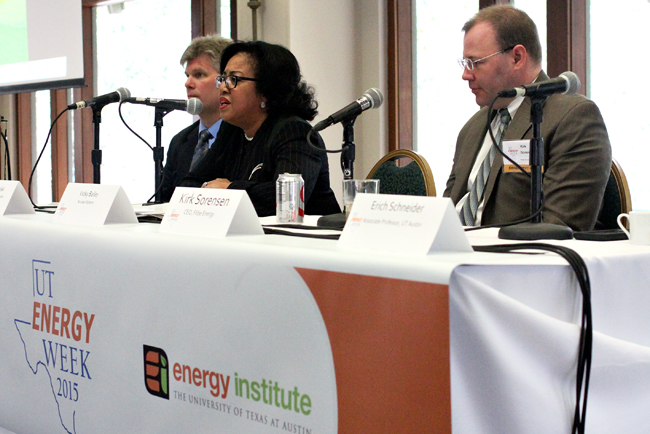Nuclear energy could be the solution to providing the world with both clean and reliable power, according Kirk Sorensen, founder of Flibe Energy, during The Future for Nuclear panel discussion at UT Energy Week on Tuesday.
“[Nuclear energy] is our biggest contributor to clean energy, and the most important part that needs to be emphasized over and over again about nuclear energy is that it’s reliable,” Sorensen said.
Nuclear energy is efficient and reliable enough that it will likely replace coal in the future, Sorensen said.
An abundance of resources, such as uranium, available for sustaining nuclear energy is another reason for its feasibility, according to UT mechanical engineering professor Erich Schneider. The United States currently holds 7 million tons of conventional uranium resources, in comparison to 3 million tons in 1965, Schneider said.
“What’s happened is that consistently we have found more uranium than we’ve taken out of the ground,” Schneider said.
The United States produces 30 percent of the world’s nuclear generation of electricity, ranking the country as the world’s largest producer of nuclear power, according to the World Nuclear Association.
Many members of the public tend to overlook nuclear energy’s benefits because of a wide-spread misconception that nuclear waste damages the environment, according to Vicky Bailey, Nuclear Matters Leadership Council member.
“Public perception is very key,” Bailey said. “It can stop any project.”
In order to sway public opinion, people in the nuclear energy industry should focus on informing and educating policy makers, stakeholders and students about the benefits of nuclear energy, Bailey said. It’s also important to acknowledge and address public concern, Bailey said.
“You have to say they’re legitimate concerns,” Bailey said. “The effort will be to try to get fact and science-based information out as best you can.”
The University of Texas also contributes to the nuclear energy arena through research in the Nuclear and Radiation Engineering program with support from other areas of campus, such as the Ferguson Structural Engineering Laboratory and Jackson School of Geosciences, according to Steven Biegalski, director of the Nuclear Engineering Laboratory. Research focuses at the University include nuclear reactor development, structures and concrete for future nuclear builds, testing methodology and the future of resources.
The state of Texas itself contributes to nuclear energy’s long-term feasibility, Biegalski said. Texas currently has two uranium mines that contribute to the world’s uranium supply.
“I think there is a lot of nuclear play — not only within the University of Texas, but also within the state of Texas,” Biegalski said.















